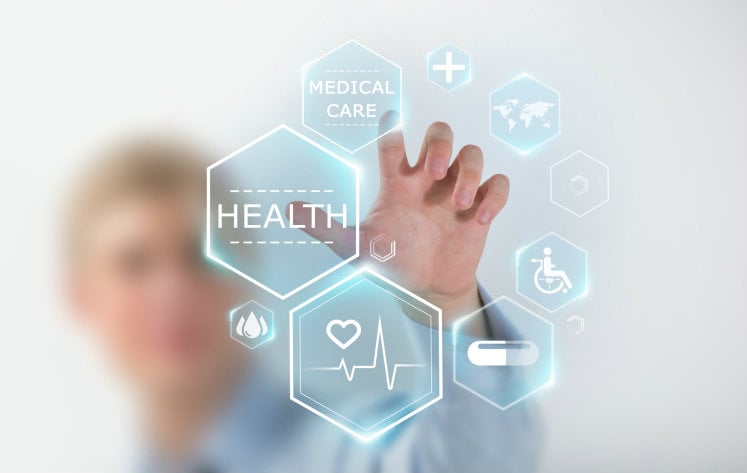Leading Healthcare RCM Approaches for Better Financial Efficiency
A Comprehensive Guide on Exactly How Medical Care RCM Works to Improve Payment and Collections
Navigating the intricacies of healthcare revenue cycle administration (RCM) is important for suppliers intending to improve their payment and collections processes. The overview unboxes the complexities of RCM, from individual enrollment to receivables monitoring, offering understandings right into enhancing each step. Integrating advanced technology and standardized treatments can considerably decrease case denials and accelerate payment cycles. Yet, truth challenge depends on perfectly merging these elements to improve capital. As we explore the core parts and techniques that drive efficiency, one inquiry stays: how can medical care entities best placement themselves to flourish economically in an ever-evolving sector?
Recognizing Earnings Cycle Monitoring
RCM is a critical administrative function that incorporates the whole economic process of client treatment, from the preliminary appointment establishing to the last payment of the equilibrium. It is an intricate treatment designed to identify, accumulate, and manage the income from the solutions offered to clients.
The RCM procedure starts when a client schedules a visit and prolongs via the individual's care journey, consisting of invoicing and collections. A vital purpose is to minimize the time between supplying a solution and receiving payment, thus boosting the company's monetary health. RCM involves various functions such as person enrollment, insurance confirmation, charge capture, coding, declares entry, settlement publishing, and taking care of denials and appeals.
Trick Parts of RCM
In the realm of Profits Cycle Monitoring (RCM), understanding its essential elements is essential to accomplishing monetary effectiveness within healthcare organizations. RCM is a thorough process that includes various phases, each critical to making certain effective invoicing and collections. The key components consist of patient registration, insurance verification, charge capture, coding, insurance claim entry, repayment posting, and receivable administration.


Once coded, insurance claims are submitted to payers, where accuracy is extremely important to avoid hold-ups or beings rejected - Healthcare RCM. Payment uploading involves recording the obtained repayments, which permits for the reconciliation of accounts. Finally, balance dues administration concentrates on tracking and addressing unpaid claims, making certain timely follow-up and resolution
Each element of RCM is interconnected, and inadequacies in any type of part can interrupt the entire cycle. For that reason, mastering these components is vital for doctor to maximize earnings and improve their economic wellness.
Techniques for Effective Billing

Standardizing invoicing treatments across the company is one more essential approach. Establishing clear guidelines for documents, coding, and submission assists keep consistency and conformity with regulative needs. Educating staff on a regular basis on these treatments makes sure everybody is up-to-date with the most up to date adjustments in invoicing codes and payer policies.
Exact cost capture is necessary in protecting against income leakage. Applying regular audits and surveillance systems permits the identification and modification of disparities before they impact revenue. In addition, maintaining open lines of communication with payers aids to rapidly resolve any kind of disputes or misunderstandings that might occur.

Lastly, engaging patients early in the invoicing process by giving clear price quotes and academic materials regarding their financial responsibilities can dramatically lower complication and improve payment timeliness. These techniques collectively contribute to an extra reliable and financially healthy and balanced billing system.
Enhancing Collections Procedures
Given the intricacies of clinical payment and the selection of payer requirements, boosting the collections procedure entails executing strategic procedures that ensure prompt and precise repayment of solutions rendered. Automation devices can assist in tracking case statuses, sending out prompt reminders to patients, and handling denials much more efficiently.
Training personnel to recognize the nuances of insurance policy plans and billing codes is equally essential. This knowledge equips them to click reference attend to billing discrepancies promptly and connect effectively with people concerning their monetary duties. In addition, clear and clear individual communications are critical. Giving comprehensive descriptions of charges and using flexible settlement plans can raise person satisfaction and punctual settlements.
Normal audits of the collections process ought to be conducted to determine areas for enhancement and make sure conformity with policies. By evaluating data, health care companies can determine fads, anticipate potential issues, and adjust approaches accordingly (Healthcare RCM). Inevitably, a well-enhanced collections process not i loved this just supports financial health and wellness but likewise contributes to a much more smooth experience for people and staff alike
Optimizing Profits Streams
Structure upon the structure of a strong collections procedure, medical care organizations can even more boost their economic stability by strategically maximizing revenue streams. This entails a multi-faceted strategy, beginning with a thorough evaluation of existing income resources to recognize inadequacies and locations for development. Using sophisticated data analytics tools enables companies to acquire insights right into payer mix, person demographics, and solution utilization patterns, permitting data-driven choices that enhance revenue capture.
Carrying out automated invoicing systems can considerably minimize errors and quicken cases refining, making certain that earnings is collected more successfully. Moreover, maximizing payer contracts with regular negotiations can boost reimbursement rates and terms, directly affecting the bottom line. Diversifying service offerings, such as incorporating telehealth or wellness programs, can also draw in a broader person base, hence raising profits capacity.
An additional critical component is improving individual engagement and complete satisfaction, as satisfied patients are more probable to follow treatment strategies and make timely payments. Using versatile payment choices and clear invoicing practices can enhance collections and foster person commitment. Healthcare RCM. By taking on these techniques, healthcare companies can develop a more resistant monetary framework, guaranteeing sustained development and security in an ever-changing industry landscape
Final Thought
Finally, medical care Earnings Cycle Monitoring (RCM) plays a vital duty in optimizing invoicing and collections processes by integrating key components such as person registration, insurance coverage verification, charge capture, coding, asserts entry, and accounts receivable administration. By using innovative technology, standardizing procedures, and cultivating client interaction, medical care providers can significantly reduce case rejections, accelerate payment cycles, and boost cash circulation. This comprehensive technique to RCM eventually leads to boosted economic performance and sustainability for medical care organizations.
The RCM process begins when a person routines a visit and expands via the person's care trip, including invoicing and collections.Another vital part is boosting client involvement and satisfaction, as pleased patients are much more likely to stick to therapy strategies and make timely repayments. Supplying flexible settlement options and transparent payment techniques can boost collections and foster client commitment.In verdict, medical care Revenue Cycle Management (RCM) plays an important role in maximizing invoicing and collections processes by incorporating essential parts such as client enrollment, insurance coverage confirmation, cost capture, coding, declares entry, and my latest blog post accounts receivable monitoring. By using sophisticated modern technology, standardizing treatments, and promoting person engagement, medical care providers can substantially lower insurance claim denials, accelerate payment cycles, and enhance cash money flow.